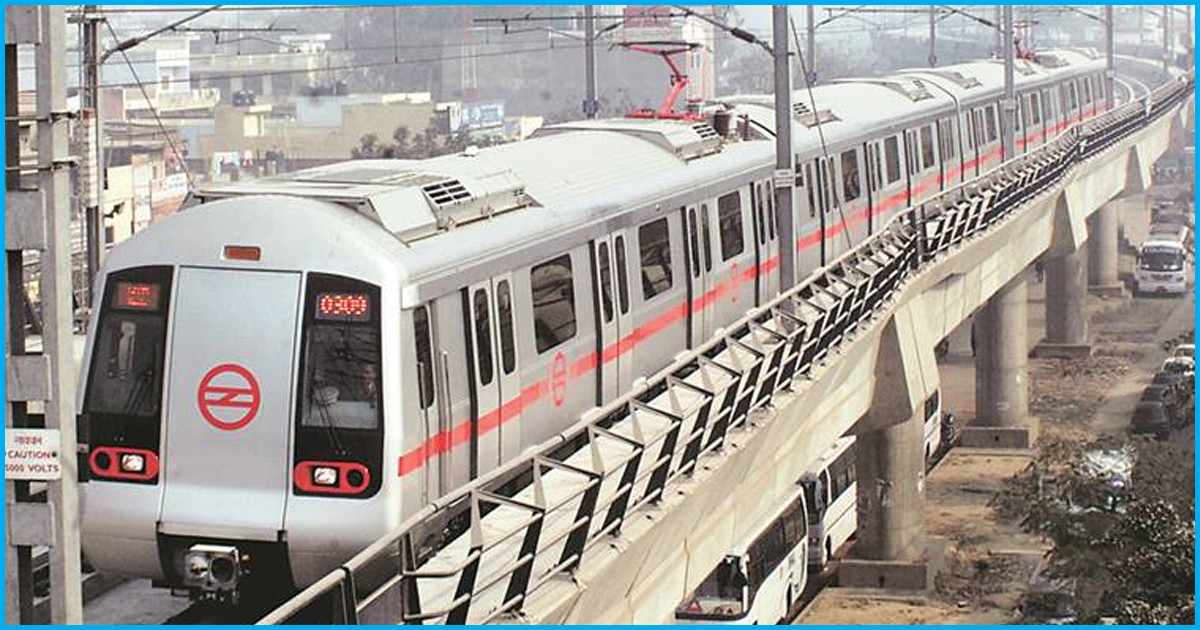
Delhi Metro Is World’s Second Most Unaffordable Transport: CSE
5 Sep 2018 11:08 AM GMT
People in Delhi who travel by metro every day would be disappointed to know that they are paying the second highest fare in the world for their daily ride. According to a study by the Centre for Science and Environment (CSE) after the fare hike last year, Delhi Metro has become the second-most unaffordable travelling service in the world.
On Tuesday, during the two-day international conference of CSE, it was highlighted that the metro transport of the national capital is the most unaffordable transport network, after Hanoi in Vietnam. The expert says that the affordability of a means of transport is defined by the percentage of total income of a commuter spends on travelling.
How much are they spending?
So the calculation to assess the affordability are based on the fourth Fare Fixation Committee (FFC) report of Delhi Metro. The report shows that 30% of Delhi’s commuters are within the monthly salary group of Rs 20,000.
According to the data released by the CSE, a middle-income Delhi Metro commuter on an average spends 19.5% of his/her income on travel. Whereas a commuter should not be paying more than 15% of the income on any mode of transport.
Programme Manager at Clean Air and Sustainable Mobility at CSE, Gaurav Dubey, said that no transit system should ask its commuters to spend more than 15% of their income on their travelling services. Also, people belonging to the lower income groups, should not share more than 10% of their income, reports the Hindustan Times.
For example, in Delhi, an unskilled daily wage labourer with an income of Rs 534 per day has to spend an average of Rs 80 (15%) out of his/her income on transport.
According to the CSE, this person would be spending the highest for travelling in a metro. So, for travelling in a non-air-conditioned public bus he/she will have to spend 8%, and for going in an air-conditioned bus, that person will pay 14% of her income. However, that person would be paying 22% of her income for travelling in Delhi Metro, the highest of all.
Without denying good services of the metro, the experts said, “There is no doubt that the quality of services provided by the Delhi Metro is good but the fares need to be kept in mind too.”
Last year, Delhi Metro fare was doubled after two hikes in May and October, this came following the recommendations of the fourth FFC. After the hike, the maximum fares escalated from Rs 30 to Rs 50, and then it reached to Rs 60. This followed with the AAP government calling for a Satayaghara (protest) as they called it an anti-people move.
According to the Money Control, there has been a drop of 32 percent in commuters (4.2 lakh) in the Delhi metro from what the DMRC had hoped to serve in 2018. The expert says the two hikes are one of the reasons behind the sudden drop in ridership.
Delhi’s transport commissioner, Varsha Joshi, has defended the fare hike by saying, “Hikes were needed to improve the quality of a transport network. However, these (increase in price) need to be introduced gradually.” She says the bigger question is, how much fare is affordable for a particular quality of ride.
Meanwhile, the Delhi Metro Rail Corporation (DMRC) has also supported its fare revisions. The officials said that the revision was done after a gap of nine years and this happened as there was almost 90% hike in power tariffs and other input costs.
Also Read: Delhi Metro To Allow Lighters & Matchboxes; Women Can Carry Small Knives Too
 All section
All section













